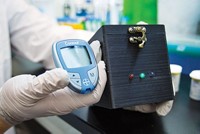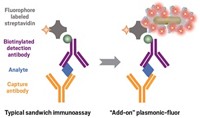Advertisement
Grab your lab coat. Let's get started
Welcome!
Welcome!
Create an account below to get 6 C&EN articles per month, receive newsletters and more - all free.
It seems this is your first time logging in online. Please enter the following information to continue.
As an ACS member you automatically get access to this site. All we need is few more details to create your reading experience.
Not you? Sign in with a different account.
Not you? Sign in with a different account.
ERROR 1
ERROR 1
ERROR 2
ERROR 2
ERROR 2
ERROR 2
ERROR 2
Password and Confirm password must match.
If you have an ACS member number, please enter it here so we can link this account to your membership. (optional)
ERROR 2
ACS values your privacy. By submitting your information, you are gaining access to C&EN and subscribing to our weekly newsletter. We use the information you provide to make your reading experience better, and we will never sell your data to third party members.
Analytical Chemistry
More Coverage For Glucose Meters
Techniques replace functional DNAs with antibodies to analyze a wider range of targets
April 23, 2012
| A version of this story appeared in
Volume 90, Issue 17
An antibody-based strategy has considerably widened the range of analytes that can be detected with personal glucose meters, according to new work by Yu Xiang and Yi Lu at the University of Illinois, Urbana-Champaign (Anal. Chem., DOI: 10.1021/ac300517n). Last year, the same team used DNAzymes and aptamers, functional DNAs that bind specific compounds, to enable commercially available personal glucose meters to measure a range of targets (C&EN, July 25, 2011, page 9). But functional DNAs have been developed for only a limited number of target compounds. Now, Xiang and Lu have replaced functional DNAs with antibodies that have been developed to recognize a much wider range of targets. They use sandwich and competitive antibody assays to quantitate a diagnostic protein (prostate-specific antigen) and a toxin (ochratoxin A), respectively. In both approaches, the antibody recognizes the analyte, and antibody-associated invertase converts sucrose to glucose, which is measured by the glucose meter. With support from the National Science Foundation’s Innovation Corps, Lu has founded a company, GlucoSentient, that will commercialize glucose-meter-based tests for nonglucose analytes.




Join the conversation
Contact the reporter
Submit a Letter to the Editor for publication
Engage with us on Twitter